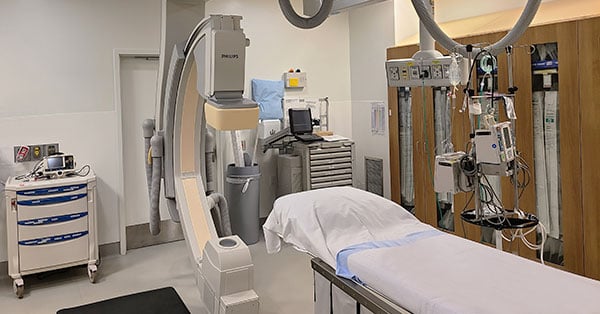
Updated: March 29, 2021 : 2 min read
How Long Will My Cath Lab Tube Last?
It's a question we've heard from cath lab equipment and parts buyers over and over: "How long can I expect my cath lab's X-ray tube to last?" Some of the people asking have no point of reference for X-ray tube lifespans. Others wonder if they can compare their cath tube to the lifespan they see in their facility's CT tubes, measured in milliamp seconds or scan seconds. Unfortunately, most cath labs don’t track tube usage in the same way as other modalities, and there isn't a way to know for sure just when a tube will reach the end of its useful life. Still, through experience and awareness of tube usage, there are some rough averages that emerge.
Average Lifespans of Cath Lab X-Ray Tubes
Block Imaging provides replacement parts for cath labs all over the world. When we sell a tube, the ones being replaced generally come back to us, so our engineers and parts experts have the opportunity to see firsthand the range of dates on them. Among the three major cath lab manufacturers, here are the average lifespans we see for their most common tubes:
- GE Performix 160A: around 8 years
- Philips MRC 200 0407 and MRC 200 0508: around 8 years
- Siemens Megalix CAT and CAT Plus: around 5 years
While these age ranges are common enough to establish an average, there are certainly exceptions. We’ve seen sites burn through tubes every 18-24 months. We’ve also seen tubes as old as 14 still in use. These outliers raise our next question:
What Affects Tube Lifespan?
The factor that affects tube lifespan more that any other is the intensity of use or, how "hard" the tube is run. The longer the tube runs and the higher the power level it runs at, the harder it has to work. If a tube is consistently run long and at high power, it's not going to last as long (generally) as a tube being used under more moderate conditions.
Sometimes, "hard" use of a tube is unavoidable. Certain procedures and certain patient body types require long runs or high power. Unfortunately, if that sounds like your typical caseload, you can expect your tubes to have a lifespan closer to the short end of the spectrum.
How Can I Extend the Life of My Tube?
There are two big things you can do to help your tube last longer:
- Always use proper warmup and shutdown sequences at the beginning and end of your day. These procedures allow the temperature changes that come with applying and removing tube power to be gradual and less stressful on your tube.
- Keep your system's tube chiller in good working order with regular maintenance. If a chiller is operating at decreased efficiency, it becomes less effective in dispersing the heat that builds up in a tube and eventually causes damage.
Replacing Your Cath Lab Tube
When your tube's time comes, it can be expensive to purchase a replacement. Fortunately, for tubes from the major manufacturers, the option is available to purchase used tubes with low to moderate usage for substantially less than buying a new tube. Here are a few examples:
- GE Performix 160A: $60,000-$80,000 (low-use) vs. $185,000 (OEM new)
- Philips MRC 200 0508: $45,000-$65,000 (low-use) vs. $183,000 (OEM new)
- Siemens Megalix CAT 125: $40,000-$60,000 (low-use) vs. $96,000 (OEM new)
The Next Step
If you're not already keeping tabs on your tube, its chiller, and your entire cath lab system with regular preventative maintenance, we can't recommend any higher that you engage a service provider and get on a schedule soon. Our own Service Team would be happy to get you set up.
If your cath lab's tube is showing signs of failure right now, our Parts Team can help you find a replacement with low usage. You can browse our inventory of cath parts online, or call our parts hotline directly at 877-621-2887.

Kenn Dextrom
Kenn Dextrom is the Director of Product Manager at Block Imaging. He aims to provide clear direction and careful planning for Interventional Cath Lab buyers and working with the Block Imaging product team to provide excellent solutions for our customers. Out of the office, he spends most of his time keeping up with his wife and their three energetic sons.





